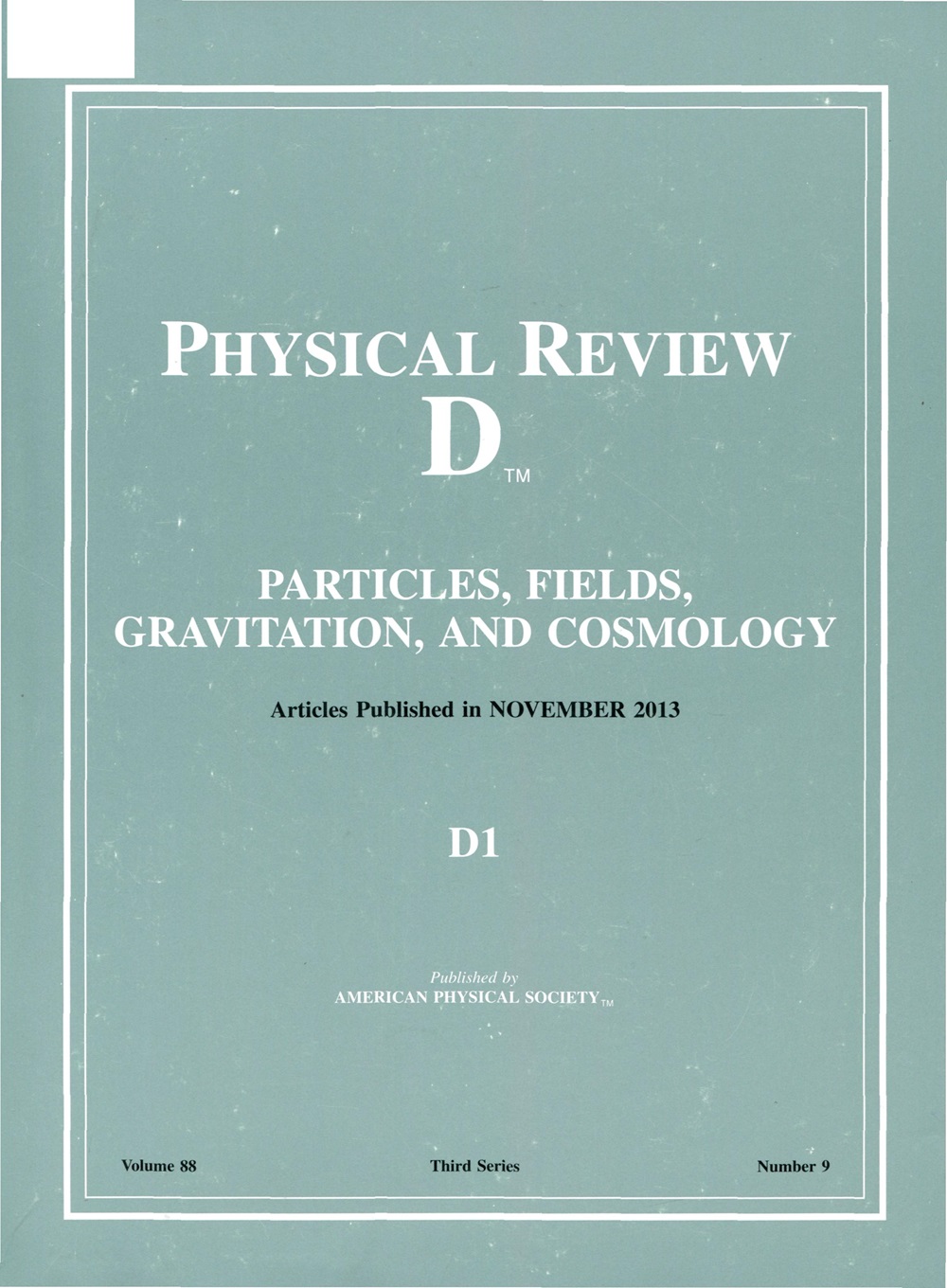外加磁场作用下强子气体的热电效应
IF 5
2区 物理与天体物理
Q1 Physics and Astronomy
引用次数: 0
摘要
在相对论重离子对撞机和大型强子对撞机的能量下,重离子碰撞形成的热而致密的强子介质在存在温度梯度和非零重子化学势的情况下表现出热电效应。本文利用弛豫时间近似下的相对论玻尔兹曼输运方程,研究了热、密相互作用强子气体的热电系数。讨论了强子共振气体模型不同框架下的热电性质。在外加磁场的作用下,热电系数变得各向异性,从而产生类霍尔热电系数,即能斯特系数,以及磁-塞贝克系数。我们还首次估计了介质的汤姆逊系数,这是由于介质的塞贝克系数对温度的依赖而出现的。在研究热电发电机性能的背景下,我们计算了介质的热电优值。2025年由美国物理学会出版本文章由计算机程序翻译,如有差异,请以英文原文为准。
Thermoelectric effects of an interacting hadron gas in the presence of an external magnetic field
The hot and dense hadronic medium formed during the heavy-ion collisions at the Relativistic Heavy Ion Collider and Large Hadron Collider energies can show thermoelectric effects in the presence of temperature gradients and nonzero baryon chemical potential. In this article, we study the thermoelectric coefficients of an interacting hot and dense hadron gas using the relativistic Boltzmann transport equation under the relaxation time approximation. We discuss the thermoelectric properties within different frameworks of hadron resonance gas models. In the presence of an external magnetic field, the thermoelectric coefficients become anisotropic, which leads to Hall-like thermoelectric coefficients, namely Nernst coefficients, along with the magneto-Seebeck coefficients. For the first time, we also estimate the Thomson coefficient of the medium, which comes into the picture due to the temperature dependence of the Seebeck coefficient of the medium. In the context of studying the thermoelectric generator performance, we calculate the values of the thermoelectric figure of merit of the medium. Published by the American Physical Society 2025
求助全文
通过发布文献求助,成功后即可免费获取论文全文。
去求助
来源期刊

Physical Review D
物理-天文与天体物理
CiteScore
9.20
自引率
36.00%
发文量
0
审稿时长
2 months
期刊介绍:
Physical Review D (PRD) is a leading journal in elementary particle physics, field theory, gravitation, and cosmology and is one of the top-cited journals in high-energy physics.
PRD covers experimental and theoretical results in all aspects of particle physics, field theory, gravitation and cosmology, including:
Particle physics experiments,
Electroweak interactions,
Strong interactions,
Lattice field theories, lattice QCD,
Beyond the standard model physics,
Phenomenological aspects of field theory, general methods,
Gravity, cosmology, cosmic rays,
Astrophysics and astroparticle physics,
General relativity,
Formal aspects of field theory, field theory in curved space,
String theory, quantum gravity, gauge/gravity duality.
 求助内容:
求助内容: 应助结果提醒方式:
应助结果提醒方式:


